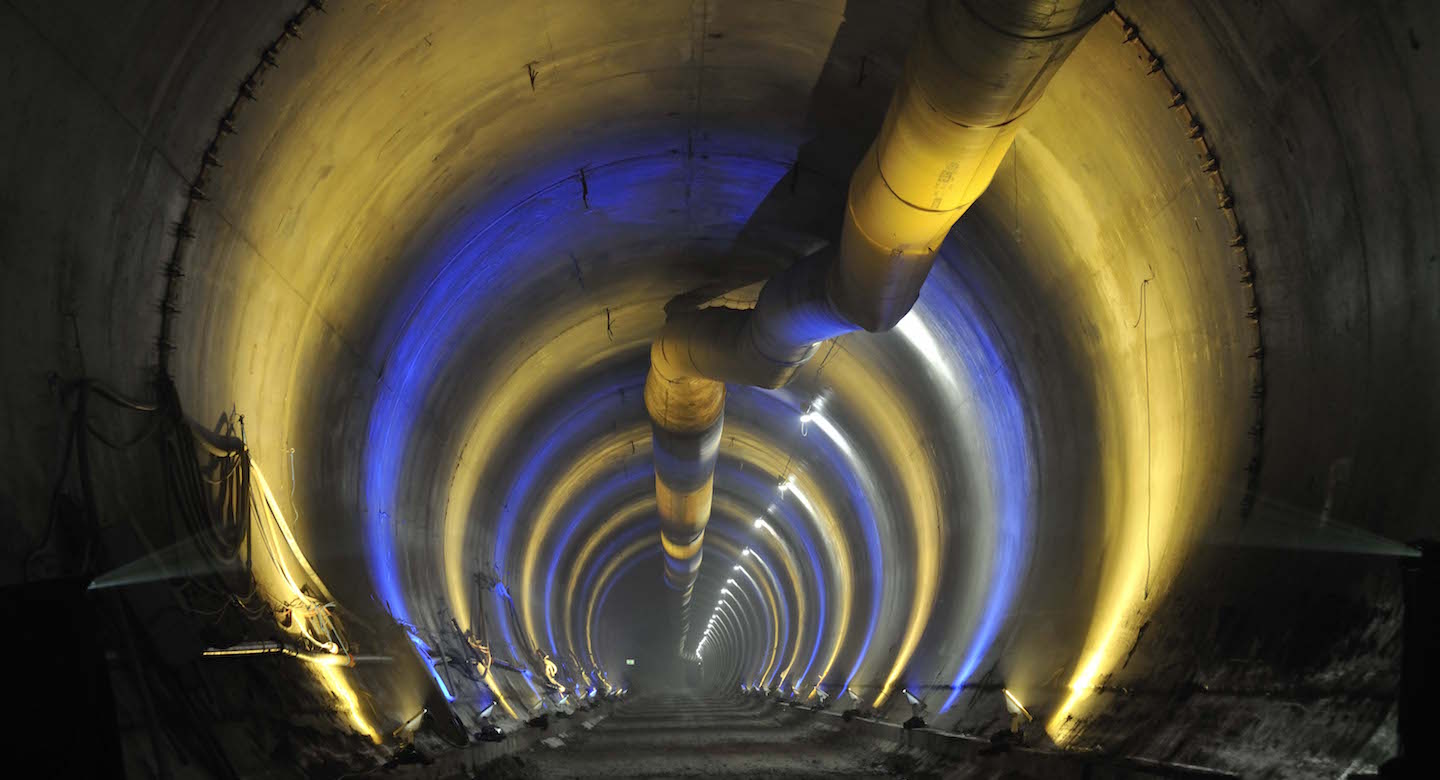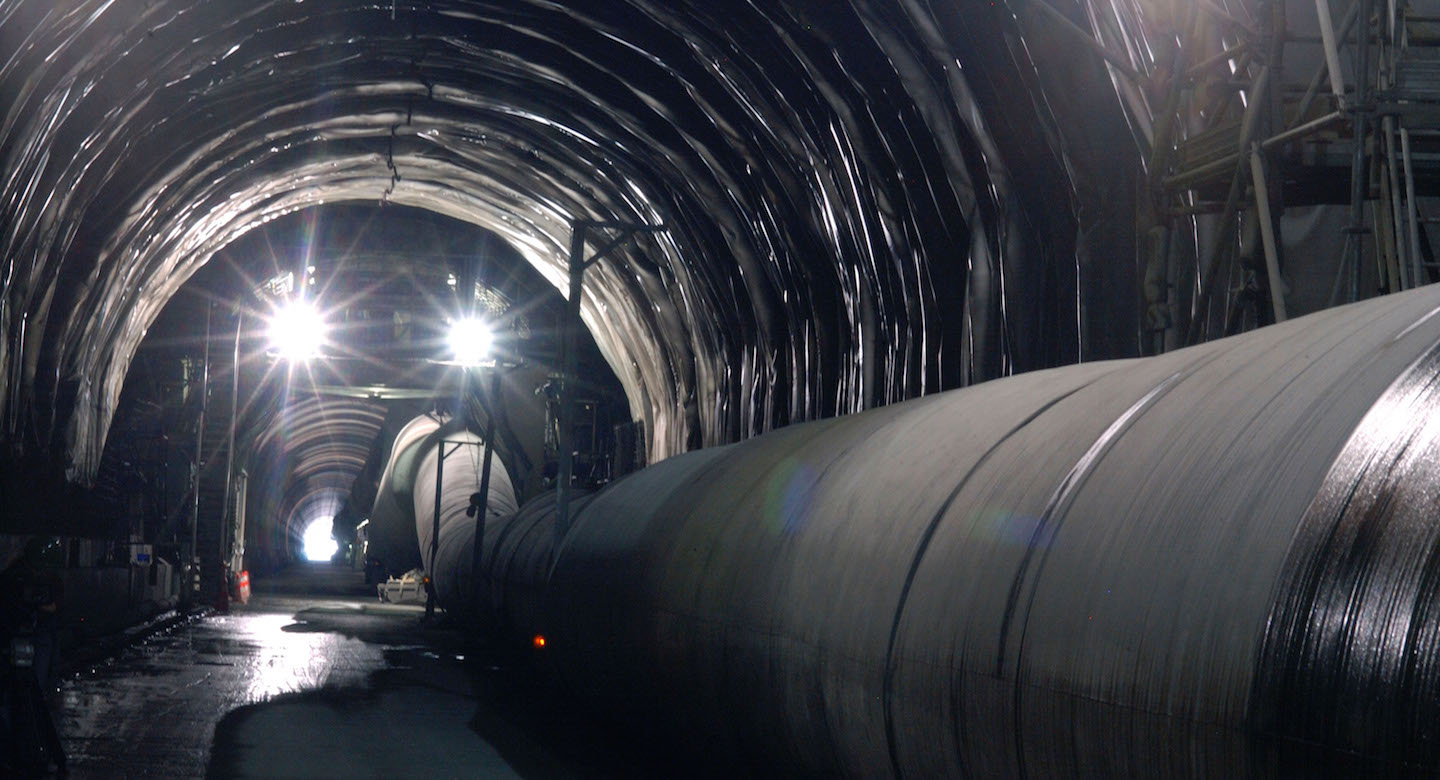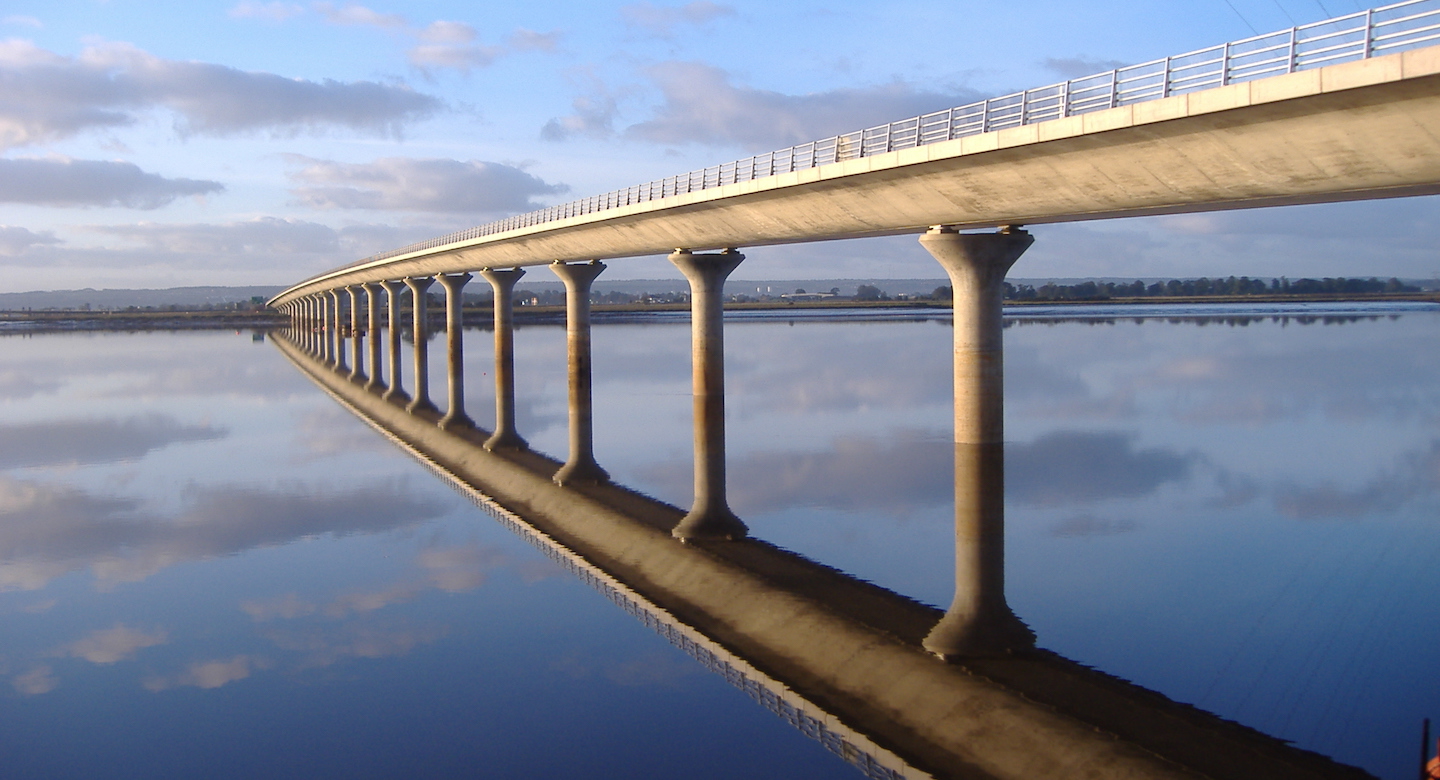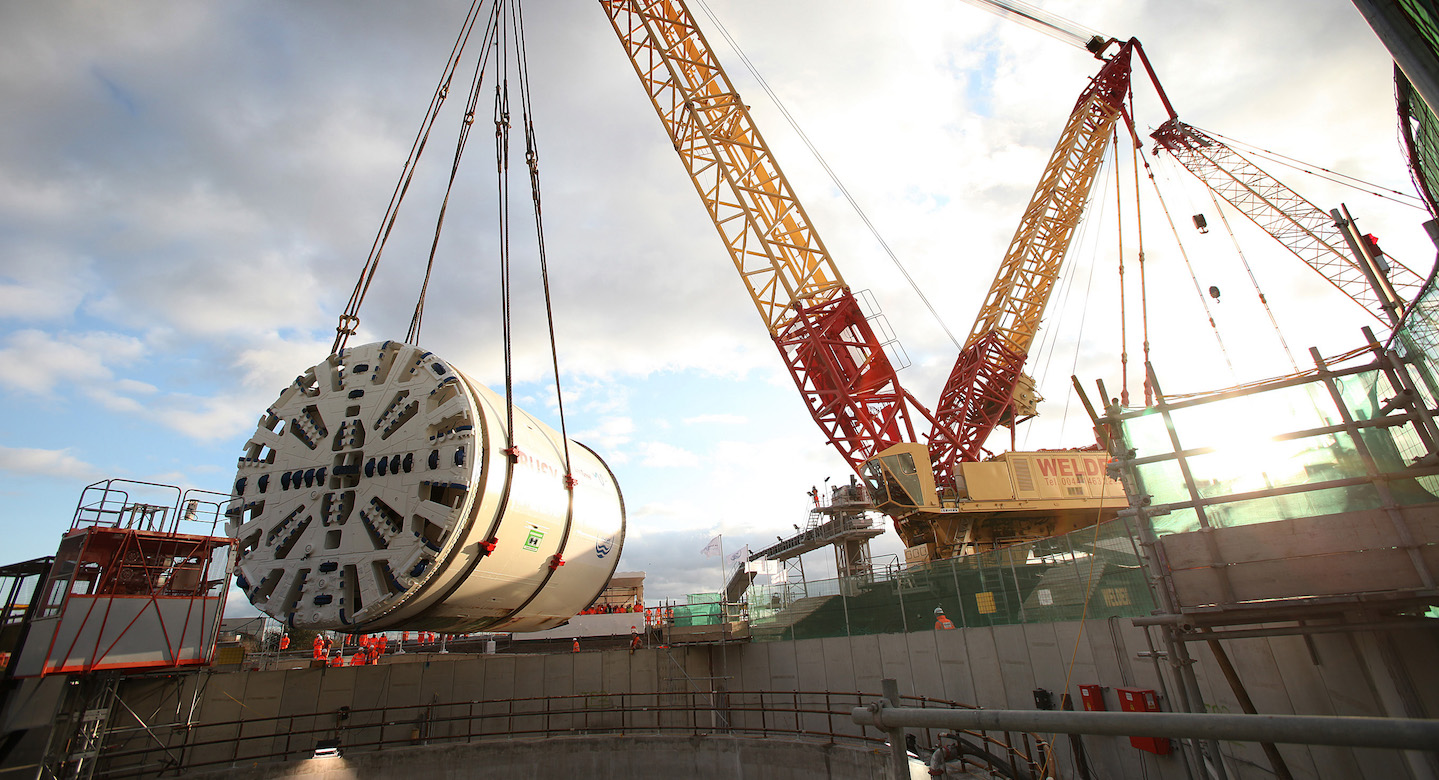
Olympia Odos, a concession company led by VINCI Concessions, in association with the German company HOCHTIEF PPP Solutions and three Greek construction companies (Aktor Concessions, J&P-Avax, and Athena), has won the largest motorway-concession contract ever awarded in Greece. To achieve this major project successfully, the concession company subcontracted the infrastructure design and construction mandate to us. In efforts to improve traffic conditions in Greece, the country’s minister for infrastructure and transport appointed us to design, build, renovate, and operate (for a 30-year period) 202 kilometres of toll motorway linking Athens and Patras.
More specifically, the project called for designing, building, operating, and maintaining a new motorway with a dual 2-lane configuration between Corinth and Patras (120 km) and Patras and Tsakona (163.7 km) in the Peloponnese. The project also included upgrading, operating, and maintaining the existing dual 3-lane motorway connecting Elefsina to Corinth (64 km) as well as the Patras bypass (18.3 km).
This project, which will rank among the most outstanding underground works ever for a long time, marked a major advance in the art of TBM excavation. The Hallandsås dual railway tunnel, located in western Sweden and inaugurated on December 8, 2015, required more than 25 years of concerted effort to complete. It was with a view to replacing a 100-year-old single-track stretch (and a permanent bottleneck between the cities of Göteborg and Malmö) that the parliament in Stockholm decided to build 2 rail tunnels 11 kilometres in total length with a diameter of 9.04 metres linking Skottorp and Förslöv. The project was initiated in 1991 and would only be completed 25 years later as a result of multiple technical setbacks. Following successive failures by local companies, we were mandated by Trafikverket to develop this structure in partnership with the Swedish firm, Skanska.
The project was part of a construction initiative to build high-speed rail lines in Belgium, specifically between Brussels and the border with Germany: a distance of 147 kilometres, with the line going through Louvain and Liège.
On a 42-kilometre section of this line, VINCI Construction Grands Projets was mandated to build a tunnel more than 6 kilometres long between Chenée and Soumagne, close to the Chaudfontaine spa and about 10 kilometres from Liège.
The project covers more than 6.5 kilometres in total length and includes the 5.9-kilometre tunnel as well as two cut-and-cover trenches, 177 and 413 metres long, respectively. The two-way tunnel, which is sloped at 1.7%, includes a 110-m² excavated section.
This project covers the rail link to the tunnel below the English Channel, also known as High Speed 1 (HS1). This is the first high-speed rail line to be built in the United Kingdom. It is 108 kilometres long and connects the entrance to the Channel Tunnel (Chunnel) on the British side to London.
On this project, VINCI Construction Grands Projets was mandated by Union Railways Ltd to carry out 3 lots, including the construction of a single-tube tunnel 3 kilometres long, a bridge 1,255 metres long (including a 305-metre central span), a new section 13.8 kilometres long (including an incrementally launched bridge 1,025 metres long), two viaducts (675 and 454 metres, respectively), and 14 engineering structures of various kinds.
An ongoing increase in traffic density on Kincardine Bridge gave rise to a public inquest designed to find solutions to relieve traffic congestion over the Firth of Forth span and around the town of Kincardine-on-Forth.
The solution put forward by VINCI Construction Grands Projets was to build a new bridge northwest of the existing span, thereby bypassing the city of Kincardine.
The consortium then built a 1,200-metre incrementally launched bridge over the Forth River along with 5.3 kilometres of roadway, 3 interchanges, and 4 standard engineering structures. The bridge connects 2 major thoroughfares north and south of the river, thereby providing traffic relief in this region located 40 kilometres northwest of Edinburgh.
London’s spread and density make managing its railway network a constant challenge. The Crossrail network crosses London from east to west. This was one of the largest railway-infrastructure projects in all of Europe.
VINCI Construction Grands Projets involved in it as part of a consortium in charge of 2 contracts. The first contract (lot C510) included the construction of tunnels at Liverpool Street and Whitechapel Stations along with related structures. The second contract (lot C512) called for the partial demolition of Whitechapel Station and construction of a new station and ticket-sale space. It also included construction of 3 shafts, internal structures, a footbridge and tunnel platforms, along with related electrical, mechanical, and architectural infrastructure.
The Sud Europe Atlantique high-speed rail line (LGV SEA) is the largest civil engineering project in Europe this decade and the most extensive railway infrastructure concession contract ever awarded in Europe.
This 300-kilometre-plus project is designed to reduce travel time between Paris and Bordeaux by nearly an hour. VINCI Construction Grands Projets was part of the consortium in charge of designing and building this new rail line whose operation by private interests is set for a period of 50 years.
This rail project required the building of more than 500 standard engineering structures along the 302-kilometre line, including 24 viaducts, 15 grade separations, and 7 cut-and-covers.
Considered one of the most important investments ever made in a French port, the purpose of Port 2000 was to double Le Havre’s container traffic (which had risen to 1.5 million units in 2000) by 2006.
In this national-scale project, VINCI Construction Grands Projet was approached to build a 6-km breakwater with two 55 m x 28 m x 20 m concrete caisson roundheads in a 13-m draught and a 4-km breakwater surrounding the reclamation area.
Reconciling Londoners with a cleaner River Thames – that was a key challenge for the British capital. VINCI Construction Grands Projets contributed to this endeavour with a design-build project for a stormwater and sewage collection system between the Abbey Mills and Beckton pumping stations: the Lee Tunnel. The project called for the construction of a tunnel 6.9 kilometres long with an internal diameter of 7.2 metres. Located at a depth reaching 80 metres, it will reduce by half the 32 million cubic metres of wastewater poured into the Thames every year by collecting it at the source.
Naga Hammadi Dam, located 150 kilometres north of Luxor, is designed to replace an existing dam built early in the 20th century and provide irrigation to the Nile River Valley, regulate the flow of the river, and generate electrical power. This concrete gravity dam features two locks for river navigation and produces 64 megawatts of electricity thanks to four 16-megawatt turbines. To build Naga Hammadi, the Nile River had to be diverted for three years, and a total of 400,000 cubic metres of concrete was used at a monthly pace peaking at 30,000 cubic metres.











